Curious former students brought up to speed at Alumni Energy Event
Over 200 former TU/e students attended the Alumni Energy Event last week. A guided tour of the laboratories and various short presentations updated them on the state of energy technology. While some former students had joined because they were curious about the latest technology, others mainly came to network.
TU/e is good at scientific research. But important as it may be, research in itself won’t change the world, Professor Ton Backx told his audience of alumni last week. Research at TU/e includes work on new technologies that can accelerate the energy transition and slow down climate change. Those new technologies will only become valuable once they are applied in everyday practice. Alumni play a role in this regard, according to Backx: “They’re an ‘interface’ between TU/e research and business.”
For this reason, the alumni office teamed up with EIRES (Eindhoven Institute for Renewable Energy Systems) to organize the Alumni Energy Event, which drew over 200 former TU/e students. Judging by the number of people with grey hair, quite a few of them were retired already. But there were also young people, graduated as little as one year ago, who wanted to network and were curious about the latest developments with regard to the energy transition.
Lab tours
For the lab tours, which preceded a series of presentations, 120 alumni had signed up. They were taken on a guided tour of the TU/e laboratories by the likes of Associate Professor Antoni Forner Cuenca, who told them about the ‘transformative energy technologies’ his research group is working on. These include ‘flow batteries’, which can store so much energy that they can compensate for the solar and wind energy fluctuations of an entire district or town.
Researchers from Forner Cuenca’s team demonstrated how they use an electrolyzer to convert the greenhouse gas CO2 into ethylene. Which is remarkable, as electrolyzers are normally used to split water into hydrogen and oxygen using electricity. If green electricity is used, the result is green hydrogen, which is considered a crucial fuel to make the industrial, chemical, and heavy transport sectors more sustainable.
CO2 as raw materials
So the TU/e researchers are using the electrolyzer in a different way. By converting CO2 to ethylene, a basic raw material for chemistry, they potentially safeguard the production of plastics, fibers, alcohol, and other organic substances. Ethylene is a hydrocarbon that is normally produced by using fossil
fuels. If the energy transition is to slowly but surely phase out the latter, this requires alternative fuels for chemistry. There are several upsides to using CO2 as such: it reduces the dependence on fossil fuels, it ties up CO2 and thereby reduces greenhouse gas emissions, and it safeguards the continuity of industry and chemistry.
After the lab tours, drinks and refreshments were served. This was followed by four fifteen-minute presentations in the Blauwe Zaal of the Auditorium. One of the speakers, Mark Boneschanscher of EIRES, painted a picture of the challenge posed by the energy transition. He used a graph to demonstrate that the COVID pandemic, whose lockdowns meant aviation and automobile traffic grinded to a halt in large parts of the world, only caused a slight dip in worldwide energy use. If that downward trend had continued, which it hasn’t, it wouldn’t have been enough to achieve the 2050 climate goals, Boneschanscher asserted.
Collaboration with Shell
One of the slides shown by the managing director of EIRES featured the logos of the companies TU/e’s energy institute collaborates with. This included the Shell logo. During the Q&A, someone asked why TU/e is collaborating with Shell, which announced last year that it will be curbing its sustainable energy investments. “You’re right, that’s not what we want,” Boneschanscher responded. “We’re aware of the debate on the collaboration between universities and the fossil industry. But Shell is also internally diverse. We want to work together with those people at Shell who want to make energy production more sustainable. The Executive Board has said TU/e will only collaborate with fossil companies on sustainable projects.”
Boneschanscher was followed by Professor René Janssen, who presented the progress being made in fabricating solar panels out of the mineral perovskite. By stacking solar cells made from this material in a certain way, each layer converts a different light frequency to electricity. This means the efficiency of solar panels could be increased considerably, from just over 20 to well over 40 percent.
Solar energy instead of diesel
TU/e alumnus Henk Arntz was last to take the floor. With his company Suncom Energy, he is also working on Concentrated Solar Power (CSP). By concentrating sunlight using curved mirrors, water is heated up. This heat can be used to generate electricity with steam, but the hot water can also be supplied directly to industry, which avoids having to use natural gas or diesel to produce warmth.
Suncom’s innovativeness comes down to the shape of the water-filled piping mounted in the focal point of the curved mirror. The use of square pipes instead of round ones makes it possible to create smaller installations. CSP plants are located in the deserts of North Africa and California and require a minimum investment of 100 million dollars, according to Arntz. Suncom built a CSP installation for a farmer in Someren (a village in the Dutch province of Brabant) and a food factory in Spain.
Networking
Arntz’s was motivated to speak because he’s looking for contacts in sunny Spain, where he hopes to sell more of his CSP systems. In fact, every alumnus had their own reasons for attending the Energy Event. Italian Maria, who graduated last year and is currently working at an industrial company in the Dutch province of Zeeland, was mainly interested in the developments with respect to the production of green hydrogen. An executive of a large installation company was particularly curious about the state of technology in the area of energy storage. And another young alumnus was exploring his opportunities for the future after a year of hard work at an American start-up.
According to Edith Snelders, head of TU/e’s alumni office, these kinds of events are intended to keep in touch with former students and to provide them with in-depth knowledge of science and technology. Another purpose served is to network and establish contacts, which enables TU/e technology to make its way into practice more easily.
Snelders was pleased with the diversity of the alumni present. “There was a good mix of young and old, domestic and international, men and women.” Attendees were positive following the event. “Thanks to the series of short presentations, it was easy to gain an insight into what TU/e is doing,” the installation company executive said about his impression of the event.
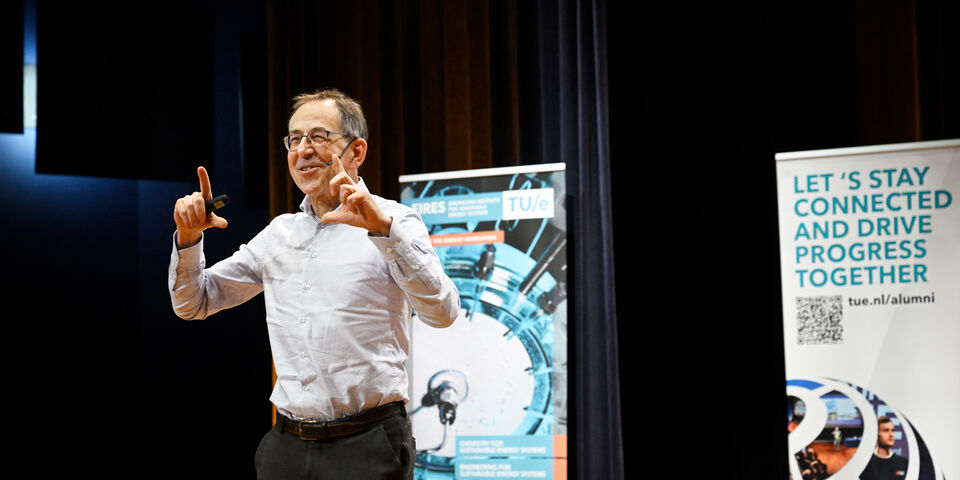

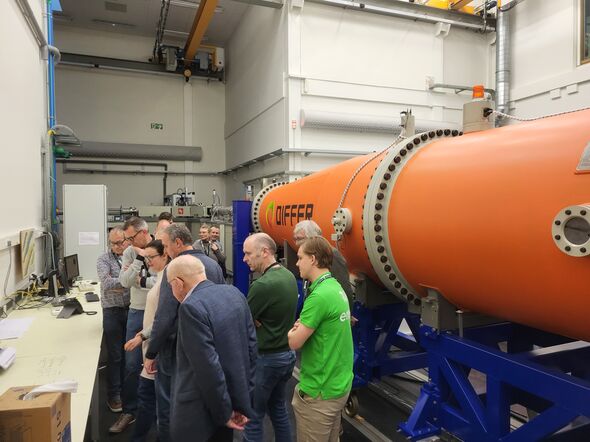
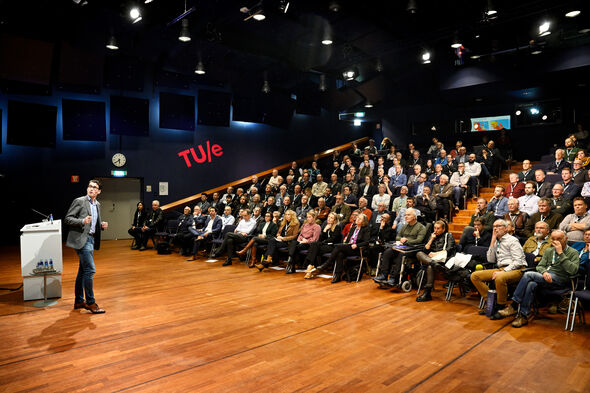
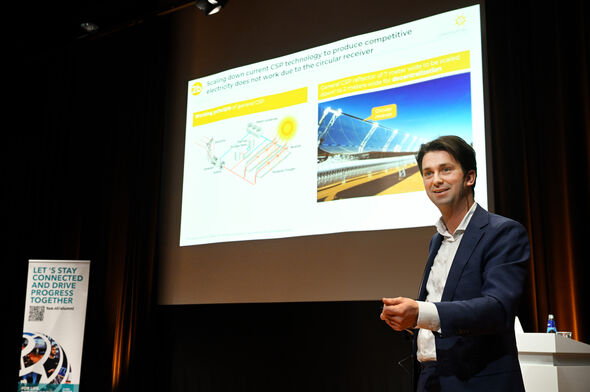
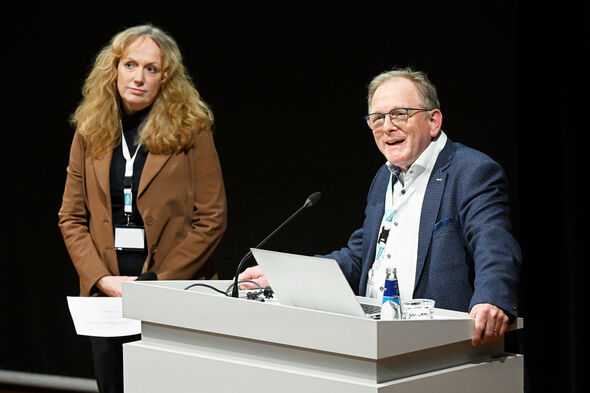
Discussion